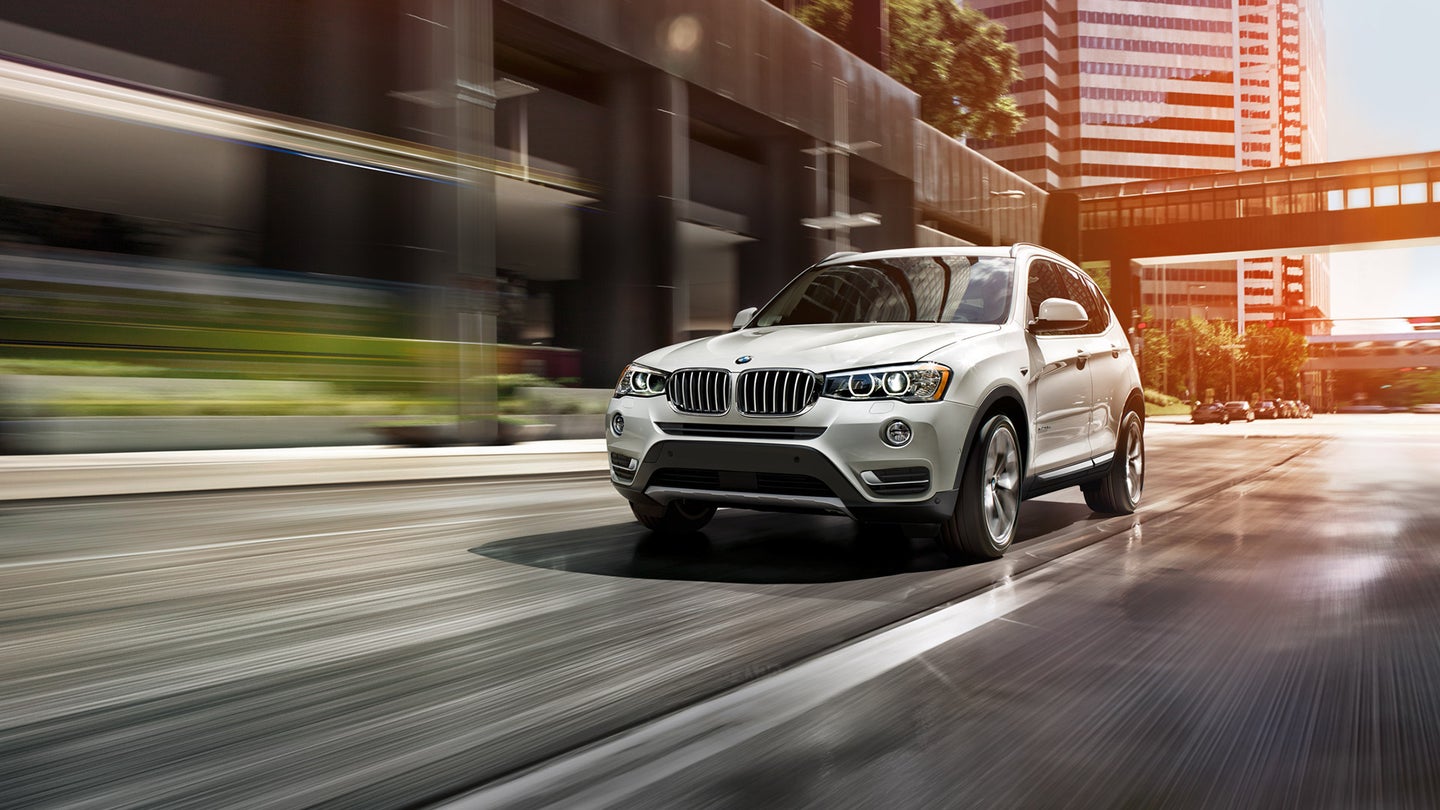Take a Virtual BMW X3 Test Drive—On Mars
Be warned: It may not be entirely realistic.

BMW has a new X3 that's virtually out of this world in its new "On a Mission" advertising campaign. The cornerstone of this series is a virtual reality test drive of the X3 on the surface of Mars.
The 360-degree video begins with the X3 on a platform rising to the Martian surface, just like an Eagle on Moonbase Alpha in Space: 1999. The view switches to the driver's seat, where you can look around in all directions during a drive through Martian canyons, tunnels, and plains. Another X3 joins you part way through the trip after nearly crashing into you as you exit the tunnel. The stereotypical BMW driver notwithstanding, you soon arrive safely at another Mars base, having experienced all the luxury and technology the X3 has to offer.

There are a number of problems with this virtual scenario. For one, the BMW X3 is designed to operate on Earth, not Mars. The Martian atmosphere is 100 times thinner than Earth's. On top of that, while Earth's atmosphere is 21 percent oxygen, what's left of the Martian atmosphere only contains 0.13 percent oxygen. This makes it not only impossible for humans to breathe, but also for an internal combustion engine to operate. No oxygen means no boom.
But let's give BMW the benefit of the doubt and assume that these are electric X3s. The actual lunar rover was electric, and therefore exactly like a Chevy Bolt. Let's also assume they have life support systems, similar to Tesla's Bioweapon Defense Mode, to ensure that you don't die on the Martian surface. But what likely hasn't been factored in is the gravity of the situation, literally. The Martian surface has only 38 percent the gravity of Earth. That's not a showstopper for driving. The Moon has only 17 percent of Earth's gravity, and we drove on it just fine. But the lunar rover was designed for lunar conditions, not Earth's.
The BMW X3's suspension, fine-tuned for superior handling and comfort on Earth, would be significantly oversprung on Mars. At the speeds the X3 appears to be traveling in the video, it would have a hard time keeping the wheels in contact with the ground. Control would be sketchy at best, and could cause a crash at worst.
But the most difficult issue is getting a BMW X3 to Mars in the first place. While BMW does have factories all over this world, they do not yet have any on Mars, which means that vehicles would have to be exported there from Earth. NASA's MAVEN Mars orbiter mission cost a total of $671 million, of which $185 million was specifically for launch and ground support. MAVEN weighed 5,410 pounds at launch, slightly more than a 4,230 pound BMW X3.
We also haven't taken a landing system into account, which would be necessary to place the X3 on the Martian surface safely. But when BMW's accountants realize they just spent $185 million to send an X3 to Mars, they'll be so angry about it, they'd be more than happy to let it smash into the Martian surface, just to spite the marketing department.
We have officially crossed into the realm of the ludicrous, but that's what it would take to actually drive a BMW X3 on Mars. Personally, my money's on Elon Musk for putting the first car on Mars. He owns not only Tesla, but also SpaceX, so his costs would likely be significantly lower than NASA's. Plus, Musk is both brilliant and crazy enough to actually pull it off.
